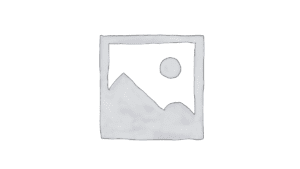Lossless and Reversible Data Hiding in Encrypted Images
Abstract
This paper proposes a lossless, a reversible, and a combined data hiding schemes for ciphertext images encrypted by public key cryptosystems with probabilistic and homomorphic properties. In the lossless scheme, the ciphertext pixels are replaced with new values to embed the additional data into several LSB-planes of ciphertext pixels by multi-layer wet paper coding. Lossless Reversible Data in Encrypted Images .Then, the embedded data can be directly extracted from the encrypted domain, and the data embedding operation does not affect the decryption of original plaintext image. In the reversible scheme, a preprocessing is employed to shrink the image histogram before image encryption, so that the modification on encrypted images for data embedding will not cause any pixel oversaturation in plaintext domain. Although a slight distortion is introduced, the embedded data can be extracted and the original image can be recovered from the directly decrypted image. Due to the compatibility between the lossless and reversible schemes, the data embedding operations in the two manners can be simultaneously performed in an encrypted image. With the combined technique, a receiver may extract a part of embedded data before decryption, and extract another part of embedded data and recover the original plaintext image after decryption.
Lossless Reversible Data in Encrypted Images
CHAPTER 1 –INTRODUCTION
Encryption and data hiding are two effective means of data protection. While the encryption techniques convert plaintext content into unreadable ciphertext, the data hiding techniques embed additional data into cover media by introducing slight modifications. In some distortion-unacceptable scenarios, data hiding may be performed with a lossless or reversible manner. Although the terms “lossless” and “reversible” have a same meaning in a set of previous references, we would distinguish them in this work. We say a data hiding method is lossless if the display of cover signal containing embedded data is same as that of original cover even though the cover data have been modified for data embedding.
For example, in the pixels with the most used color in a palette image are assigned to some unused color indices for carrying the additional data, and these indices are redirected to the most used color. This way, although the indices of these pixels are altered, the actual colors of the pixels are kept unchanged. On the other hand, we say a data hiding method is reversible if the original cover content can be perfectly recovered from the cover version containing embedded data even though a slight distortion has been introduced in data embedding procedure. A number of mechanisms, such as difference expansion, histogram shift and lossless compression, have been employed to develop the reversible data hiding techniques for digital images.
Recently, several good prediction approaches and optimal transition probability under payload-distortion criterion have been introduced to improve the performance of reversible data hiding. Combination of data hiding and encryption has been studied in recent years. In some works, data hiding and encryption are jointed with a simple manner. For example, a part of cover data is used for carrying additional data and the rest data are encrypted for privacy protection. Alternatively, the additional data are embedded into a data space that is invariable to encryption operations. In another type of the works, data embedding is performed in encrypted domain, and an authorized receiver can recover the original plaintext cover image and extract the embedded data.
This technique is termed as reversible data hiding in encrypted images (RDHEI). In some scenarios, for securely sharing secret images, a content owner may encrypt the images before transmission, and an inferior assistant or a channel administrator hopes to append some additional messages, such as the origin information, image notations or authentication data, within the encrypted images though he does not know the image content. For example, when medical images have been encrypted for protecting the patient privacy, a database administrator may aim to embed the personal information into the corresponding encrypted images. Here, it may be hopeful that the original content can be recovered without any error after decryption and retrieve of additional message at receiver side.
Original image is encrypted by an exclusive-or operation with pseudo-random bits, and then the additional data are embedded by flipping a part of least significant bits (LSB) of encrypted image. By exploiting the spatial correlation in natural images, the embedded data and the original content can be retrieved at receiver side. The performance of RDHEI can be further improved by introducing an implementation order or a flipping ratio in each additional bit is embedded into a block of data encrypted by the Advanced Encryption Standard (AES). When a receiver decrypts the encrypted image containing additional data, however, the quality of decrypted image is significantly degraded due to the disturbance of additional data. In the data-hider compresses the LSB of encrypted image to generate a sparse space for carrying the additional data.
Since only the LSB is changed in the data embedding phase, the quality of directly decrypted image is satisfactory. Reversible data hiding schemes for encrypted JPEG images is also presented. In a sparse data space for accommodating additional data is directly created by compress the encrypted data. If the creation of sparse data space or the compression is implemented before encryption, a better performance can be achieved.
CHAPTER 2- LITRATURE REVIEW
2.1 EXISTING SYSTEM:
Encryption and data hiding are two effective means of data protection. While the encryption techniques convert plaintext content into unreadable ciphertext, the data hiding techniques embed additional data into cover media by introducing slight modifications. In some distortion-unacceptable scenarios, data hiding may be performed with a lossy or irreversible manner. Although the terms “lossy” and “reversible” have a same meaning in a set of previous references, we would distinguish them in this work. We say a data hiding method is lossy if the display of cover signal containing embedded data is same as that of original cover even though the cover data have been modified for data embedding.
For example, in the pixels with the most used color in a palette image are assigned to some unused color indices for carrying the additional data, and these indices are redirected to the most used color. This way, although the indices of these pixels are altered, the actual colors of the pixels are kept changed.
2.1.1 DISADVANTAGES:
- Quality degrades with higher ratio of compression. Can’t get original back after compressing.
- The biggest con is that this is achieved with a loss of quality. Most compression tools available will let you choose the degree of compression that will be used on your images.
2.2 PROPOSED SYSTEM:
This technique is termed as reversible data hiding in encrypted images (RDHEI). In some scenarios, for securely sharing secret images, a content owner may encrypt the images before transmission, and an inferior assistant or a channel administrator hopes to append some additional messages, such as the origin information, image notations or authentication data, within the encrypted images though he does not know the image content. For example, when medical images have been encrypted for protecting the patient privacy, a database administrator may aim to embed the personal information into the corresponding encrypted images. Here, it may be hopeful that the original content can be recovered without any error after decryption and retrieve of additional message at receiver side.
Original image is encrypted by an exclusive-or operation with pseudo-random bits, and then the additional data are embedded by flipping a part of least significant bits (LSB) of encrypted image. By exploiting the spatial correlation i
CHAPTER 3 – SYSTEM SPECIFICATIONS
HARDWARE REQUIREMENT:
- Speed – 1 GHz
- RAM – 256 MB (min)
- Hard Disk – 20 GB
- Floppy Drive – 44 MB
- Key Board – Standard Windows Keyboard
- Mouse – Two or Three Button Mouse
- Monitor – SVGA
- Processor – Pentium –IV
SOFTWARE REQUIREMENTS:
.NET
- Operating System : Windows XP or Win7
- Front End : Microsoft Visual Studio .NET 2010
- Script : C# Script
- Back End : MS-SQL Server 2008






